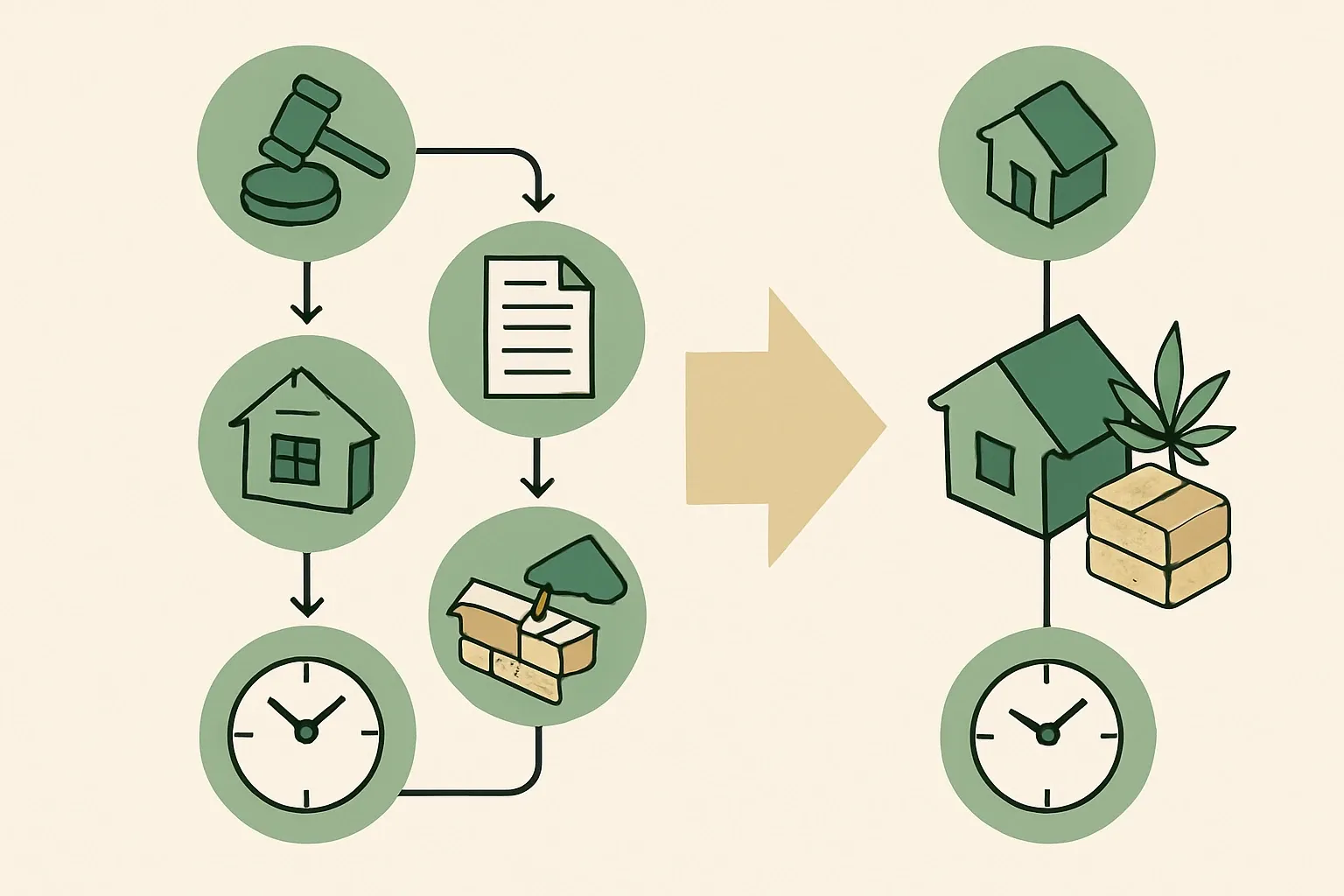Austin Greenlights Hempcrete—Code Change, EPD Opportunity
On July 10 2025, Austin becomes the first major U.S. city to fold Appendix BL of the 2024 International Residential Code into law. That one vote swaps “alternative material” red tape for a straight-up permit path for hemp-lime walls. If you sell hemp shives, lime binders, or pre-cast blocks, the clock just started ticking on your environmental paperwork.


Appendix BL in a Nutshell
Unlike most model-code appendices that gather dust, Austin’s council adopted BL outright on April 10 2025; the rules hit building counters July 10 (Austin Development Services, 2025). Hemp-lime walls up to 20 ft tall can now be permitted like any 2×6 stud assembly. Structural loads stay on the frame, fire testing must meet ASTM E84, and minimum R-values mirror 2021 IECC.
Why Builders Are Buzzing
Hempcrete walls sequester 60 – 165 kg CO₂e per cubic metre while curing, then keep absorbing small amounts of CO₂ for decades (UK Hempcrete, 2024). Conventional concrete emits roughly 400 kg CO₂e per cubic metre—even before the ready-mix truck shows up (GlobeNewswire, 2025). In a city chasing a Net-Zero by 2040 roadmap, the math sells itself.
Permit Desk Reality Check
Before Appendix BL, hemp-lime projects in Austin waited up to six extra weeks for “alternate means” approvals, often backed by costly third-party engineering letters. Those letters are now optional, trimming soft-cost risk for GC bids and accessory-dwelling-unit start-ups.
The EPD Ripple Effect
City staff still expect product-level proof of carbon claims when projects chase LEED v5 or Austin Energy Green Building points. That lands squarely on manufacturers: no Environmental Product Declaration, no line item on the spec.
- EPDs convert code buzz into quantifiable GWP credits, which weigh 9–12 % in most rating systems (USGBC draft, 2024).
- Early-stage costing shows hemp-lime blocks with an EPD close bid gaps by 5–8 % on multifamily infill where carbon thresholds apply (internal benchmarking, limited sample).
Data Hurdles You’ll Face Fast
- Plant-level energy metering is often missing because many processors lease mixed-use facilities.
- Variable binder recipes mean you may need more than one EPD to cover spray-in, cast-in-place, and block formats.
- Regional crop variance affects biogenic carbon math; auditors ask for farm logistics you probably never logged.
Nail those three and the rest is admin, not mystery.
Choosing a Lifecycle Partner
Speed counts. Austin’s code clock hits inspection stages this summer; architects are writing specs now. Pick an LCA team that gathers utility bills straight from your ops dashboards and offers provisional EPD drafts in under eight weeks. One slowpoke cycle and a rival mix grabs the spotlight.
Watch Those First Projects
The first permitted hemp-lime ADU broke ground in April on Onion Creek. Its material submittal package runs 27 pages, three of which are third-party EPDs. Expect that to become the norm, not the novelty, so get your paperwork sorted befrore the next RFQ drops.
Frequently Asked Questions
Does Austin’s adoption of Appendix BL automatically approve my hemp-lime product?
No. The code clears the system but each product still needs ICC-ES or equivalent test data and, increasingly, an EPD to document embodied carbon.
Can one EPD cover spray-in, cast-in-place, and block hempcrete?
Only if the mix proportions and densities stay within the PCR’s declared product group. Divergent recipes usually require separate declarations.
How long does an EPD stay valid under EN 15804-A2 rules?
Five years is standard. If a new PCR version lands sooner, you update at the next renewal but the original EPD is not void in the interim.
Are there credits for hemp-lime in Austin Energy Green Building?
Draft 2025 guidance awards up to three points for biogenic carbon materials verified by an EPD, plus thermal envelope bonuses if the assembly beats city U-factor tables.
